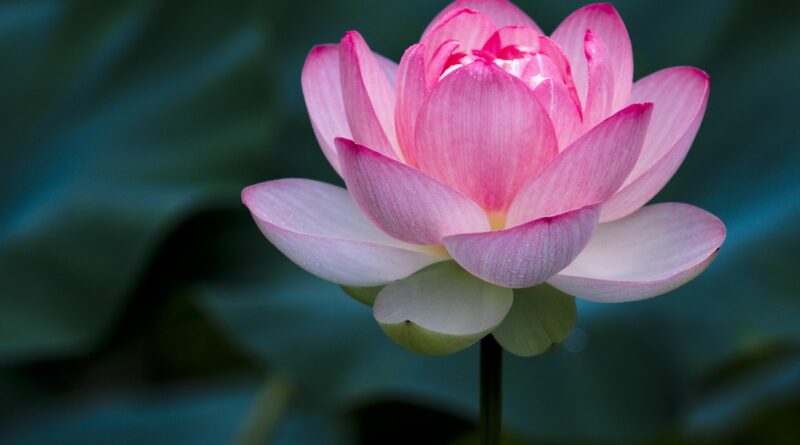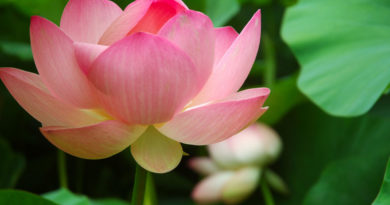VIPASSANA MEDITATION – CHAPTER 6: NINE WAYS TO SHARPEN THE MENTAL FACULTIES
MAIN CONTENT
VIPASSANA MEDITATION – CHAPTER 6: NINE WAYS TO SHARPEN THE MENTAL FACULTIES
The Five Mental Faculties of a meditator are saddha, viriya, sati, samadhi, and panna: These five are known as Pancindriya (panca means five, indriya means faculties) as well as Pancabala (Five Mental Powers).
- Saddha means faith with right understanding or through right understanding.
- Viriya means strenuous effort or energy.
- Sati means mindfulness or sustained, constant mindfulness.
- Samadhi means deep concentration.
- Panna means wisdom, insight or enlightenment.
For meditation, these Five Mental Faculties must be strong, powerful and balanced as stated in the commentary on the Visuddhimagg a.. Saddha must be firm and unwavering, and sati must be powerful and strong samadhi must be deep and panna must be penetrating.
Part 1 – Balancing The Mental Faculties
To make these five faculties strong, powerful and balanced, there are nine guidelines which a meditator must follow. If these faculties are strong but they are not in balance, a meditator cannot attain insight and enlightenment of the cessation of suffering. Suddha (faith) must be in balance with panna (wisdom), and samadhi (concentration) must be in balance with viriya (effort). The main mental factor – mindfulness, need not be in balance with any faculties; it must be constant, powerful, sustained and uninterrupted.
If saddh is weak and panna is powerrul, a meditator may analyse his experience in the course of meditation. While experiencing a mental or physical process, he will analyse it, especially ifhe has a wide knowledge of the Dhamma. When he analyses his experience, that analytical knowledge impedes his concentration. Then his concentration will be broken or weakened. There is no room for logical reasoning or philosophical thinking or analysing which are not right understanding of the natural process of mental and physical phenomena. When a dhamma is not rightly penetrated, comprehended or realised, a meditator may have less faith or a disbelief in the doctrine as a result of his analytical knowledge of the dhamma or experience. Only after he has completed the practice of meditation and experienced enlightenment, can he analyse it in any way. Then he will have unwavering confidence in the Buddha, Dhamma and Sangha because of his experiential knowledge.
If a meditator believes in the Buddha or the Buddhas doctrine, then his wisdom or insight knowledge is in balance with firm faith (saddha). He can then proceed with his practice without any disturbance by analytical knowledge or reasoning, or philosophical thinking. Some meditators want to display their knowledge of Buddhism or Dhamma, so they sometimes analyse what they experience in their meditation and talk about something which is contrary to reality. According to the commentary on the Visuddhimagga, faith must be in balance with panna (wisdom, insight knowledge) and vice versa.
When I first started mindfulness meditation, my purpose was to test the technique to see if it was right. Before I began mindfulness meditation, I went through two volumes of Vipassana Meditation written by the Venerable Mahasi Sayadaw. At that time I had not met the Venerable Saydaw personally.
However, the contemplation of the abdominal movement is very straightforward to those who have learnt the meditation technique from the book. I accepted the technique as true and correct because I knew that the abdominal movement is vayo dhatu, and the other three element.: fire element (tejo dh&tzs), water element (apo dhatu) and earth element (pathavi dhatu) are also included in the abdominal movement. As we can contemplate the four elements, this technique must be correct.
Traditionally we tend to favour the method of meditation on respiration or breathing meditation (anapanasati). I practised anapanasati in my days as a samanera when I was 17 to 24 years old. Though I now hold that the Mahasi Sayadaws technique is correct, I could not accept it as satisfactory then because I was clinging to the traditional method of mindfulness of respiration. That was why I wanted to test the Mahasi Sayadaws technique which begins with the contemplation of the abdominal movement. Although I went to the Mahasi Meditation Centre and began to practise the technique, I did it with much doubt. That was in 1953 when I spent my vassa (rains) there for four months doing an intensive course of meditation. At that time, I was a lecturer at a Buddhist University in Mandalay. I practised under Venerable U Nandavamsa. He told me: U Janaka, you have gone through higher examinations and you are now a lecturer in the University. You must put aside your knowledge of the Dhamma from books if you want to achieve something out of this meditation.
Having accepted his advice, I put aside my knowledge and practised as advised by my teacher. As such, my faith was in balance with my wisdom because I did not analyse the experience or the technique based on my preconceptions or the knowledge that I had learnt from books.
If panna (wisdom) is weak and saddha (faith) is strong, then a meditator may be credulous. We say he is credulous because he has faith without knowledge, wisdom or intelligence, and tends to believe easily any theory or doctrine. If a meditator is credulous, he may fall into a doctrine or theory which leads to the wrong path. Therefore, saddha must be in balance with pana, knowledge or wisdom. In this way, Saddhindriya and Pannindriya must be in balance.
Then again, samadhi (concentration) and viriya (energy) must be in balance. If viriya is more powerful and stronger than samadhi, you cannot concentrate well on the object of meditation. The commentary says: If virzya is stronger or more powerful than samadhi, a meditators mind will become distracted and restless (uddhacca).
In the beginning of the practice his concentration is usually weak and often wanders. So, he should follow the mind and watch it as it is. If a meditator is enthusiastic for the achievement of insight, he may put too much effort in his practice, thereby causing the mind to become distracted and restless. Effort must be kept in balance with samadhi. To do this, he must reduce his effort, keeping his mind stable and steady, noting whatever arises in his mind and body attentively, but not too energetically. Then he will gradually attain some degree of concentration. Because of this concentration, his effort will become steady and firm, neither too strong nor too lax.
In some cases when a meditator has practised meditation for two or three weeks, his concentration becomes very deep and strong, the noting mind notes the object by itself, automatically and effortlessly. If, however, insufficient effort is put in, the noting mind will gradually become dull and heavy. Hence, that concentration changes into sloth and torpor or sleepiness. The commentary says: –
If concentration is too strong and effort is too weak, then that concentration changes into sloth and torpor or sleepiness (thina middha).
So concentration must be kept in balance with effort (viriya). The passive posture of sitting will only make his mind more concentrated on the object and, as less and less effort is required, the mind will become more and more dull. To keep his concentration in balance with effort, he should practise walking meditation longer than sitting. However, only very few meditators experience concentration that exceeds effort. There are also some meditators whose effort exceeds their concentration. Therefore, concentration must be kept in balance with effort, depending on circumstances.
According to the commentary, we can never say that sati is too strong or powerful because it is best for you to be mindful of each and every activity of mind and body from moment to moment. Then mindfulness becomes constant, sustained, uninterrupted and continuous, thereby giving rise to deep concentration. When concentration is deep, insight will unfold naturally and you will be able to realise the mind and body processes (nama and rupa). So, we can say that mindfulness is never too strong or powerful.
According to the Visuddhimagga, there are nine ways to sharpen these five faculties which a meditator must follow.
The First Way is that the meditator must keep in mind that he will realise the disappearance of mental and physical processes or compounded things when he sees them or when he observes them as they really are. That should be the attitude of a meditator. Sometimes a meditator does not believe that every mental and physical process is Impermanent, subject to arising and passing away (anicca).. Because of this preconception he may not be able to realise the true nature of the mind body processes. Though he may gain some concentration, it would only enable him to attain peace and happiness to a limited extent. The commentary says: A meditator must keep in mind that he is going to realise the Impermanence of existence or mind- body processes if he observes them.
The Second Way is, he must treat the practise of mindfulness with respect, i.e. he must practise mindfulness meditation seriously. If he lacks respect for the technique or the result of meditation, then he will not put enough effort into his practice. Consequently, he cannot concentrate his mind well on the object of meditation. Then he will not be able to realise the true nature of nama and rupa.
The Third Way is, his mindfulness of mental and physical processes must be constant, sustained, uninterrupted and continuous. Only then can he attain the deep concentration upon which he can build up the insight knowledge which penetrates into the true nature of mental and physical processes. This is a very important point which every meditator must follow. While you are awake, you must constantly and continuously be aware of whatever arises in your mind and body as it really is. Be mindful for the whole day without a break. When I say sati, it means the constant, sustained and uninterrupted mindfulness and not the ordinary mindfulness.
The Fourth Way is the seven kinds of suitability which a meditator depends upon: a suitable meditation hall, food, weather, etc. Whether or not the conditions are suitable you should make effort in your practice. Sometimes a meditator is very attached to the fan because of the hot weather. He wants to sit under the fan. Actually a meditator must be indifferent to whether it is cold, warm or hot; he must not choose.
Mindfulness is actually the source of every achievement. By means of mindfulness, he can change an enemy into a friend. If he feels hot, he should be mindful of it. If he does so, the heat will gradually become a friend. Likewise with pain. When he observes it, the concentration becomes stronger and the pain may then seem to be more severe. Actually it does not become more severe; it is just that the mind, with deep concentration, become more sensitive. So it knows the pain more and more clearly, making it, seem more severe. But when he comes to realise that pain is just a mental process of unpleasant feeling, he will no longer be aware of himself or his bodily form. What he realises at that moment is just the painful sensation and the mind that notes it. He can differentiate between the sensation and the mind that notes it. He does not identify the pain with himself, so the pain does not disturb his concentration. It is like a friend. Therefore, mindfulness is everything, the source of every achievement. Though you know it theoretically, you should also know it practically. By means of mindfulness, you can turn an enemy into a friend. A mindful meditator has no enemies at all in the world. All phenomena are friends because they are conducive to the attainment of insight or enlightenment – the cessation of all suffering.
The Fifth Way is that a meditator must remember the way in which he attained deep concentration. He must remember that way and practise it repeatedly using that acquired skill to enable him to attain deep concentration.
The Sixth Way is that a meditator must develop the seven Factors of Enlightenment (bojihanga). You must develop the seven bojjhangas, as and when they are needed, they are: mindfulness, investigation of states, energy, happiness, tranquility, concentration and equanimity
The Seventh Way is that you must not be worried about your body or your Life. Sometimes a meditator who strives very hard in this meditation from four in the morning till nine or ten at right without rest, fears he may become weak. He worries and thinks that if he continues to exert in that way for a month, he may die of fatigue or some illness. Thus he will not make sufficient effort in his practice and his mindfulness will not be constant, continuous and sustained. When mindfulness is interrupted, it cannot cause deep concentration to arise. When concentration is weak, insight knowledge of the true nature of bodily and mental processes will not unfold. That is why the text says that to sharpen these Five Mental Faculties, you must not be concerned about your body and health. Strive to the utmost, practise strenuously for the whole day without taking a rest or a break, without concern for the body.
The Eighth Way is that whenever mental or physical pain arises, you should strive to note it by putting more effort into your practice. When pain arises, there is a tendency or desire to change position so that it will disapper because you are reluctant to note it. Instead, you must put more effort into your practice to overcome the pain by being aware of it more energetically, attentively and precisely. Then the pain will become your friend because it enables you to attain deep concentration and clear insight.
The Ninth Way is that you must not stop half way to your goal. It means that you must not stop your practice of mindfulness meditation until you achieve Arahantship. Because of your eagerness to achieve Arahantship, you will put proper effort in the practice thereby making these Five Mental Faculties strong and powerful.
To summarize, these are the nine ways to sharpen the Five Mental Faculties of a meditator:
- Keep in mind the aim to realise the impermanence of the mental physical process.
- Practice the Dhamma seriously and with respect.
- Maintain constant, uninterrupted and continuous mindfulness by being aware of all daily activities, moment to moment without a break for the whole day.
- Seven kinds of suitability must be followed or observed.
- Remember how to achieve the concentration that was attained previously.
- Develop the seven Factors of Enlightenment.
- Do not worry about your bodily health and life during meditation.
- Overcome physical pain – dukkha vedana through strenuous effort in your practice.
- Do not stop half way to your goal. That means you must always be striving as long as you have not attained Arahantship.









